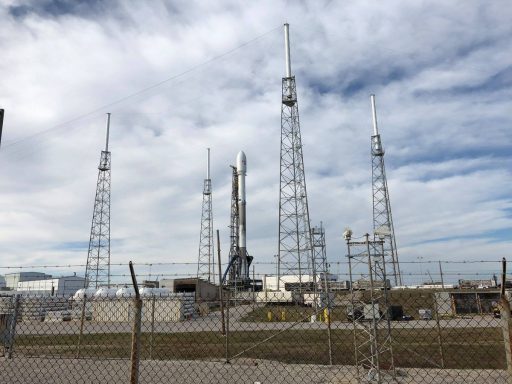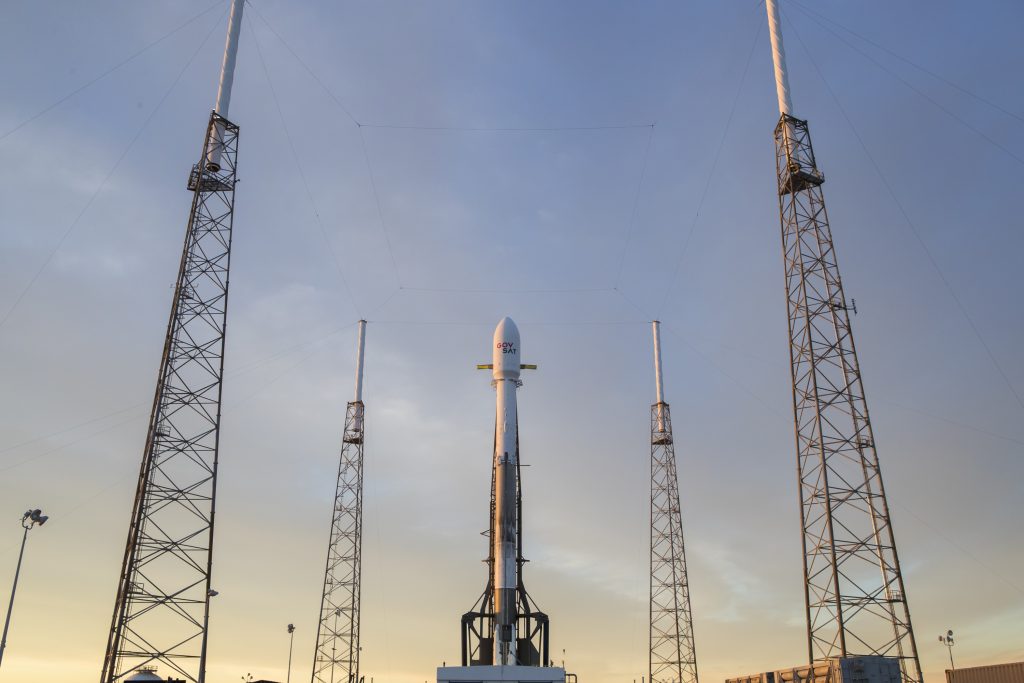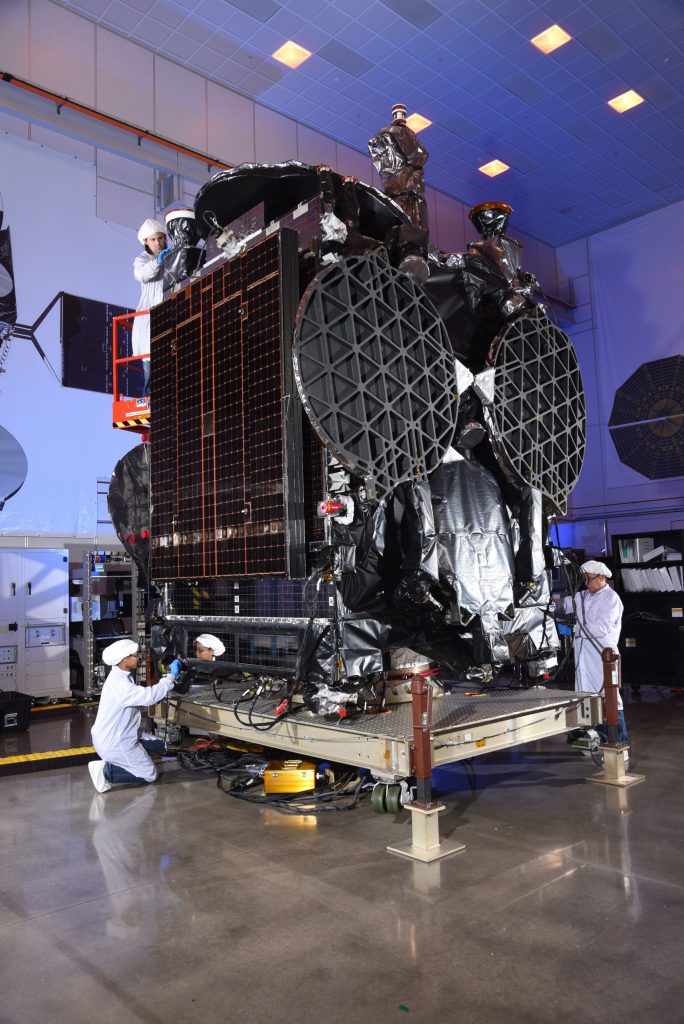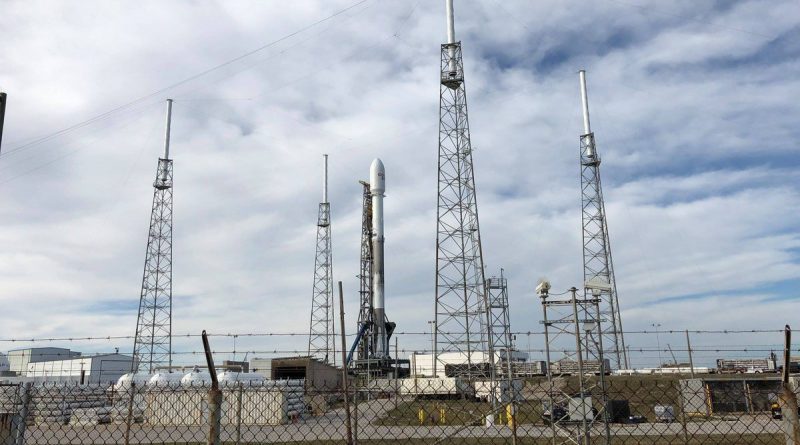SpaceX Delays Expendable Falcon 9 Launch with Luxembourg’s GovSat-1

SpaceX delayed the launch of the company’s sixth flight-proven Falcon 9 rocket on Tuesday due to a faulty transducer on the launch vehicle, putting in motion a 24-hour recycle to Wednesday’s backup launch window of 21:25 to 23:46 UTC. The company’s second mission in 2018 is set to carry the SES 16 / GovSat-1 satellite into a high-energy Supersynchronous Transfer Orbit for operator LuxGovSat.
Gusty winds on the ground as well as sporty winds aloft had been a concern for Tuesday’s launch opportunity, but SpaceX continued to press toward liftoff by wheeling the Falcon 9 rocket out to Space Launch Complex 40 in the overnight hours and placing it in its vertical launch position by morning. The early countdown portion – dedicated to launch vehicle checks and final hands-on work at the pad – appeared to go as planned.
However, SpaceX launch controllers elected to push the day’s T-0 target into the lengthy launch window to wait for winds to subside per the day’s launch forecast that predicted a 60% chance of weather rule violations at the opening of the window and improvement to 40% by the window’s second half. Shortly after entering the hold, the SpaceX team called for a launch scrub, deferring the launch to Wednesday to replace a faulty transducer on the second stage of the launch vehicle. SpaceX did not provide details on the nature of the sensor problem or the system it affects.


Falcon 9 will be returned to its horizontal position overnight to allow engineers to complete the part replacement before another countdown will be initiated on Wednesday. Meteorologists are much more optimistic for the backup window, looking at a 90% chance of favorable weather as winds continue dropping off overnight. The only concern for Wednesday’s opportunity is a violation of the thick cloud rule as mid-level moisture and easterly winds bring the potential for cloud formation. Upper level winds will also decrease slightly, expected from the west at 100 knots, 40,000 feet in altitude.
SES 16 / GovSat has been commissioned as a high-capacity communications satellite for government/defence and institutional use, operating in the military Ka- and X-Band frequency bands and offering a combination of wide-beam anchor beams and fully steerable high-power beams to direct coverage where it is needed within the framework of military activities. A large portion of the satellite’s capacity has been reserved by the Government of Luxembourg under its obligations with NATO while the remaining capacity will be made available to government and institutional customers requiring encrypted & jam-proof communications.
GovSat is only the second GEOStar-3 satellite to be delivered to orbit, following the Al Yah 3 satellite that launched atop the Ariane 5 VA241 mission. It will operate for at least 15 years from an orbital location at 21.5°E from where it can deliver an anchor beam across Europe to interconnect government institutions, a global beam covering the entirety of Europe, Africa & the Middle East plus vast stretches of the Atlantic and Indian Oceans for maritime operations support; steerable spot beams for data-intensive applications can be directed anywhere within the satellite’s footprint.

